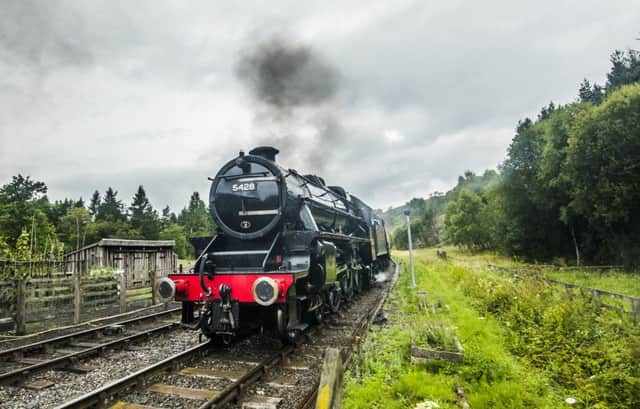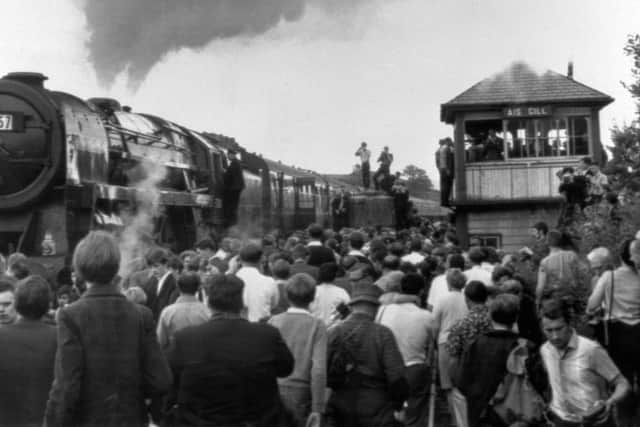Steam train that went to the end of the line


The final mainline steam service to run in Britain, 50 years ago this week, had been named the 15 Guinea Special after the price of the tickets. It ran from Liverpool via Manchester to Carlisle and arrived half-an-hour late.
Today, and again next weekend, on preserved heritage lines where steam survives and thrives, enthusiasts will gather to remember and recreate that final gasp.
Advertisement
Hide AdAdvertisement
Hide AdIt was on August 3, 1968, that the last timetabled steam service left Preston for Liverpool.


“Not many people turned out for that one,” said Bob Gwynne, an associate curator at the National Railway Museum in York. “But it was the last time you could buy a regular ticket and climb on a steam service.
“The 15 Guinea Special was the one everyone turned out to see, and to film.”
History will repeat itself next weekend when museum staff broadcast live from Oliver Cromwell, the last steam loco to be overhauled by British Rail and now a part of the national collection, as it recreates its final journey – this time on the Great Central line in Loughborough.
Advertisement
Hide AdAdvertisement
Hide AdThe face value of the 1968 tickets is around £250 in today’s money, and Mr Gwynne said: “BR priced it that way because they could. It was the start of market demand pricing, which is what we still have and the reason people complain about the fares. It’s what the market will bear.”
Stephen Oates, the chief executive of the Heritage Railway Association, said the end of steam was “an immensely sad occasion for a lot of people”.
He added: “An anniversary such as this is worth marking. It’s keeping a bit of our history alive.
“People close to steam think it’s the closest a machine comes to being a living creature. It’s the evocative smell, the rhythm and the sight – a majestic steam engine bursting up an incline.”
Advertisement
Hide AdAdvertisement
Hide AdBut many in the industry were glad to see the back of steam, Mr Gwynne said. A fireman, noticing a train spotter recording the noise from his engine, shouted into the microphone: “No more dirty hands.”
“By 1968, most of the network was already diesel and electric,” Mr Gwynne said. “There was a pocket of North-West England in which the locos were kept on.
“They had to go. The railways needed modernising and steam was very expensive. The engines took two crew and a load of fitters to keep them maintained and they had to stop every 90 miles to take on water.”
On the North Yorkshire Moors Railway, the heritage line that was the subject of a recent documentary series on Channel 5, a new golden age of steam is under way.
Advertisement
Hide AdAdvertisement
Hide AdBookings are 13 per cent up on last year, said general manager Chris Price, who added: “It lets visitors of all ages go back in time. The railway is a charity and every passenger on the line is helping to preserve it for future generations to enjoy.”